Skiing, a thrilling dance with gravity, is set against a backdrop of breathtaking landscapes. But to truly embrace this adventure, you need more than just courage and snow – you need the right gear. And at the heart of this gear is the often overlooked, yet utterly indispensable ski pole. This guide isn't just about buying ski poles; it's your first step towards carving the mountainside with confidence and style. This comprehensive guide will walk you through how to buy ski poles, ensuring you make an informed decision that enhances your skiing experience.
Key Takeaways:
- Understand the importance of choosing the right ski pole length and how it affects your skiing technique.
- Learn about the different materials and features of ski poles, such as grips, straps, and baskets.
- Discover how to select ski poles that are the correct size and fit for your skiing style and conditions.
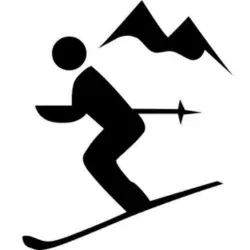
Understanding the Basics of Ski Poles
When you shop ski poles, it's not just about picking the pair that looks the best. Ski poles are an important tool for aiding balance, timing turns, and providing an extra push on flat lift lines. The right ski poles can make a significant difference in your control and comfort while skiing.
The first step in choosing ski poles is to understand the different parts that make up a pole. The main components include the grip, strap, shaft, and basket. Each of these parts comes in different materials and designs, catering to various preferences and snow conditions.

Determining the Right Ski Pole Length
The right ski pole length is crucial for maintaining proper posture and balance while skiing. To find the right length, turn the pole upside down and grab it directly under the basket. Your elbow should be at a 90-degree angle when you hold the pole with the grip touching the ground. If your arm is at a different angle, you may need longer poles or shorter poles.
A ski pole size chart can be a helpful tool when you're unsure about the correct length. These charts typically use your height to give you a starting point for the size ski poles you should consider. However, remember that your skiing style and the terrain you prefer may influence whether you need a slightly different length.
The Significance of Ski Pole Grips
Ski pole grips are more than just a place to hold your poles; they're designed to fit comfortably in your hands even when you're wearing ski gloves. Look for grips that have an ergonomic design and are made from materials that provide a secure hold. Some grips are made from rubber or soft plastic for comfort, while others might be made from eco-friendly materials for the environmentally conscious skier.
Detachable straps are a feature to consider as well. They allow you to easily remove your hands from the poles, which can be useful in certain situations on the mountain. Some straps are also adjustable, ensuring a snug fit for skiers with different hand sizes.
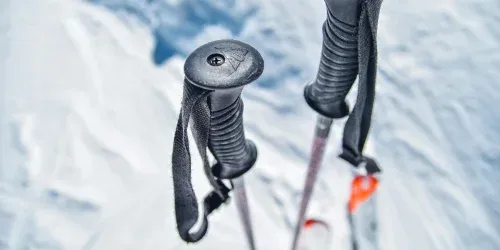
Importance of Ski Pole Straps
Ski pole straps are not just for keeping your poles attached to your wrists. They also play a role in helping skiers maintain control during pole planting and turns. Adjustable ski poles often come with straps that can be tightened or loosened for a custom fit, which is especially useful for intermediate skiers and ski racers who require precision in their movements.
When looking at ski pole straps, consider the ease of adjustment and the comfort of the material against your skin. Some straps are padded for extra comfort, while others have a simple design for those who prefer a minimalist approach.
Choosing the Right Shaft Materials
The shaft is the long part of the pole that extends from the grip to the basket. It's typically made from aluminum, carbon fiber, or a combination of different materials. Aluminum poles are durable and cost-effective, making them a good choice for recreational skiers. Carbon fiber poles are lighter and can offer better vibration damping, which is beneficial for backcountry skiers and those who frequent use their poles on hardpack snow.
When selecting shaft materials, consider the weight and flexibility you prefer. Lighter poles can reduce arm fatigue, while stiffer poles can provide more power and stability.
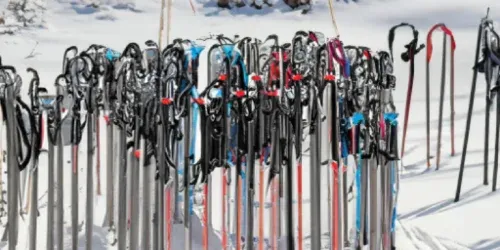
The Role of Ski Pole Baskets
Ski pole baskets are the circular or star-shaped pieces at the bottom of the pole that prevent it from sinking too deeply into the snow. For general downhill skiing, standard baskets are usually sufficient. However, backcountry skiing or skiing in deep powder may require larger powder baskets to provide the necessary support.
Interchangeable baskets are a feature to look for if you ski in different snow conditions throughout the season. They allow you to switch between smaller and larger baskets as needed, giving you versatility on the mountain.
Adjustability and Special Features
Adjustable ski poles, or telescoping poles, are a great option for skiers who enjoy both backcountry and resort skiing. These poles can be adjusted to different lengths to suit the terrain, whether you need longer poles for deep snow or shorter poles for mellow pitched catwalks.
Some adjustable poles also come with features like shock absorption, which can be helpful for reducing strain on your wrists and elbows. Consider these special features if you're looking for poles that offer more than just the basics.
Selecting Poles for Different Skiing Styles
Freestyle skiers, ski racers, and backcountry skiers all have unique needs when it comes to ski poles. Freestyle skiers might prefer shorter poles for maneuverability, while ski racers often choose stiffer, lighter poles for speed and precision. Backcountry skiers might opt for adjustable poles with larger baskets for versatility in changing snow conditions.
Think about your skiing style and the type of terrain you most often ski when selecting your poles. The right poles can enhance your performance and enjoyment on the slopes.
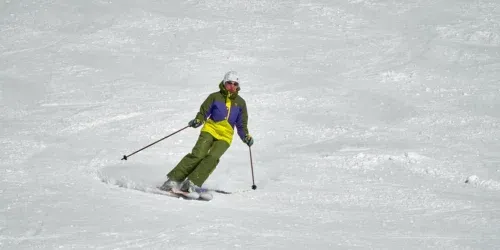
How to Measure for Ski Poles
To measure for ski poles, you can use a tape measure to find the distance from the ground to your armpit. This measurement can give you a rough idea of the pole length you need. However, it's best to test the poles in person, if possible, to ensure they're the correct size.
When testing poles, wear your ski boots and gloves to get a feel for how the poles will work with the rest of your gear. This will help you determine if the grips and straps are comfortable and if the length is right for your skiing posture.
Caring for Your Ski Poles
Once you've found the best ski poles for your needs, it's important to take care of them to ensure they last. After each use, wipe down the poles to remove any moisture or dirt. Check the grips, straps, and baskets regularly for signs of wear and replace them if necessary.
Store your poles in a cool, dry place when they're not in use. Avoid leaving them in direct sunlight or in a hot car, as extreme temperatures can damage the materials.
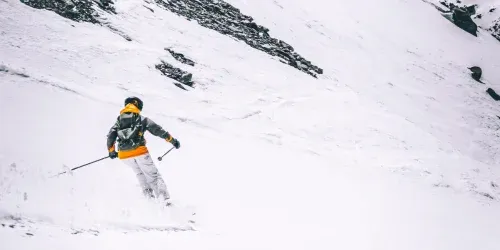
Summary
Choosing the right ski poles is about more than just picking a pair that matches your skis. It's about finding the right length, material, and features that will support your skiing technique and enhance your experience on the mountain. By considering factors like pole grips, straps, shaft materials, and baskets, you can select the perfect poles for your skiing style and conditions.

FAQs
How do I know if my ski poles are the right length?
To check if your ski poles are the right length, turn the pole upside down and grab it below the basket. Your arm should be at a 90-degree angle when the grip is on the ground. You can also use a ski pole size chart as a reference, but always test the poles with your ski boots on for the most accurate fit.
Can I use the same ski poles for different types of skiing?
While you can use the same ski poles for different types of skiing, adjustable poles with interchangeable baskets are more versatile and can be adapted to various snow conditions and skiing styles.
What should I look for in ski pole grips and straps?
Look for ski pole grips that are comfortable to hold with your ski gloves on and provide a secure grip. Straps should be adjustable for a snug fit and made from comfortable materials. Detachable straps can be a convenient feature for quick release in certain situations.









